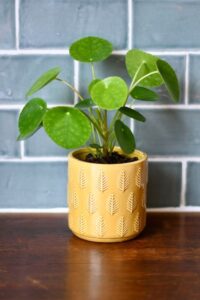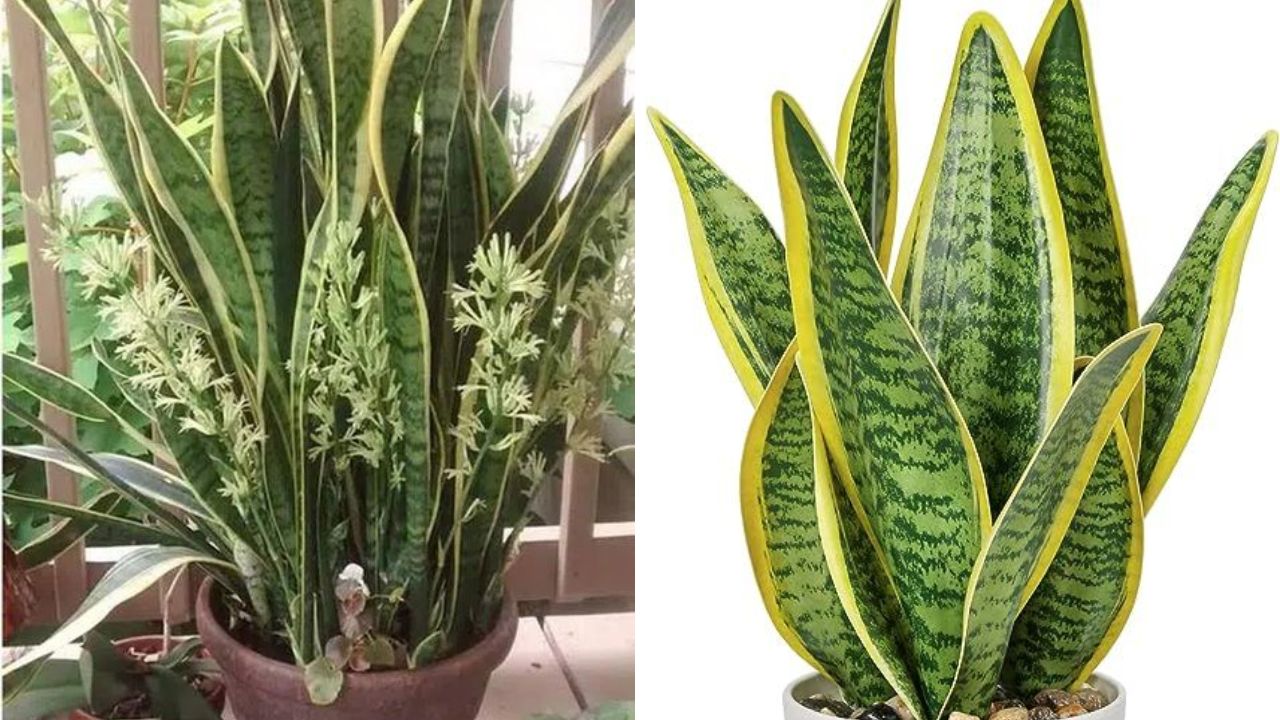
The Chinese Money Plant: A Guide to Growth, Care, and Prosperity
The Chinese Money Plant, scientifically known as Pilea peperomioides, is a charming and popular houseplant that has captured the hearts of plant enthusiasts around the world. Native to the Yunnan Province of China, this plant is distinguished by its unique round, coin-shaped leaves, which have given rise to its common name. The plant’s distinctive appearance is not only aesthetically pleasing but also rich in symbolism.
In Chinese culture, the Chinese Money Plant is considered a symbol of good fortune and prosperity. The round leaves are reminiscent of coins, which is why it is often associated with wealth and financial success. This association has made the plant a popular gift, especially during the Chinese New Year and other significant celebrations, as it is believed to bring positive energy and prosperity to its recipient.
The cultural significance of the Chinese Money Plant extends beyond its monetary associations. In Feng Shui, the art of arranging living spaces to create balance and harmony, the Chinese Money Plant is thought to bring positive energy (Chi) into the home. It is often placed in the wealth corner of a room, according to the Bagua map, to enhance the flow of energy and attract abundance.
The Chinese Money Plant continues to be a beloved addition to homes and offices, not only for its beauty but also for the cultural richness and positivity it embodies.
The Chinese Money Plant, or Pilea peperomioides, is an attractive and popular houseplant known for its unique and eye-catching appearance. Here’s a detailed description:
Description Of Chinese Money Plant

Physical Characteristics
- Leaves: The plant features shiny, dark green, circular leaves that can grow up to 10 cm (4 inches) in diameter. These leaves are described as peltate, meaning they are circular with the petiole (leaf stem) attached near the center, giving them a distinctive look as if they are floating or standing away from the main stem.
- Growth Habit: It is an erect, evergreen perennial that grows to around 30 cm (12 inches) tall and wide in the wild. Indoors, it has the potential to grow larger, depending on the care and environment provided.
- Stem: The stem is greenish to dark brown, usually unbranched and upright, and becomes lignified at the base when mature. In poor growing conditions, the plant may lose leaves in the lower part of the stem, giving it a distinctive appearance.
- Flowers: The flowers of the Chinese Money Plant are inconspicuous, and it’s grown primarily for its foliage
History of the Chinese Money Plant
The history of the Chinese Money Plant, is as fascinating as the plant itself. Here’s a brief history based on the information available:
Discovery and Spread
- The plant was first collected by Scottish botanist George Forrest in 1906 and again in 1910, in the Cang Mountain range in Yunnan Province, Southern China.
- In 1945, the species was rediscovered by Norwegian missionary Agnar Espegren in Yunnan Province when he was fleeing from Hunan Province. He took cuttings of the plant back to Norway, by way of India in 1946, and from there it spread throughout Scandinavia.
Propagation Among Gardeners
- Pilea peperomioides became popular in the 1960s and 1970s, especially around London and Edinburgh, where it was propagated among amateur gardeners via cuttings.
- The plant earned the nickname of “friendship plant” or “pass-along plant” because it was commonly shared among friends and family.
Identification and Classification
- The plant’s true classification in the nettle family Urticaceae was not well-known to western botanists until the 1980s.
- The first known published image of Pilea peperomioides appeared in the Kew magazine in 1984.
Commercial Availability
- Through the early 2010s and 2020s, Pilea peperomioides became widely available commercially and is no longer considered a rarity.
- The initial offerings for sale on the mainstream plant market saw great demand for the plant, with prices going as high as $75 USD for a single unrooted cutting, advertised on Instagram, as late as 2019. However, the price has since become more affordable.
The journey of the Chinese Money Plant from the mountains of Yunnan to homes around the world is a testament to the plant’s appeal and the power of sharing among plant lovers. Its history is not just about the plant itself, but also about the connections and friendships it has fostered along the way.
Care and Maintenance

Caring for a Chinese Money Plant, is relatively straightforward, making it an ideal plant for both beginners and experienced gardeners. Here are the key points for its care and maintenance:
Light and Temperature
- The Chinese Money Plant prefers medium to bright indirect light. It should be rotated regularly to maintain its symmetrical shape.
- While it can adapt to lower light conditions, it will grow best in bright light, which encourages larger leaves and a more compact growth.
Water and Humidity
- Watering should be done when the soil feels dry to the touch. In general, this means watering weekly in summer and fortnightly in winter.
- The plant will begin to droop when it’s thirsty, signaling it’s time to water.
- It enjoys moderate to high humidity levels, but can adapt to average household humidity.
Soil and Planting
- Use rich, well-draining soil with a pH between 6.0-7.0. A mix of peat-based or coir-based potting soil amended with perlite is ideal.
Fertilizing
- Apply a balanced liquid fertilizer every four weeks during the growing season.
- Reduce fertilizing to every few months in spring and summer, and avoid fertilizing in fall and winter when the plant’s growth slows down.
Pruning and Repotting
- Pruning is not typically necessary, but you can trim away any yellow or damaged leaves to keep the plant looking its best.
- Repotting should be done when the plant outgrows its pot, usually every two years.
Common Issues
- Overwatering can lead to root rot, so ensure the soil is nearly dry before watering again.
- Pests like aphids, spider mites, and mealybugs can be a problem, but they are easily treated with insecticidal soap or neem oil.
By following these care guidelines, your Chinese Money Plant should thrive and bring a touch of prosperity and greenery to your home.
Propagation Of Chinese Money Plant

Propagating the Chinese Money Plant, is a simple and rewarding process. Here are the steps for the most common methods of propagation:
Propagation from Offshoots (Pups):
- Identify the Pups: Look for small plants growing at the base of the mother plant or emerging from the soil.
- Separation: Once the pups have a few leaves and their own roots, gently separate them from the mother plant using a clean, sharp knife.
- Potting: Plant the separated pups in their pots with well-draining soil and water lightly to keep the soil moist.
Propagation from Stem Cuttings:
- Cutting: Take a stem cutting with a few leaves attached. Make sure the cutting is about 2-3 inches long.
- Rooting: Place the cutting in water or moist soil. If using water, change it every few days to prevent bacterial growth.
- Transplanting: Once the roots are a few inches long, transplant the cutting into a pot with soil.
Propagation from Leaf Cuttings:
- Leaf Cutting: Although not as common, you can also propagate using leaf cuttings. Take a healthy leaf and cut it into sections.
- Rooting: Place the leaf sections on top of moist soil, ensuring the cut edge is in contact with the soil.
- Growth: Keep the soil moist and wait for new shoots to emerge from the cut edges of the leaf.
Tips for Successful Propagation:
- Light: Provide bright, indirect light for the new plants.
- Humidity: Maintain high humidity around the cuttings by covering them with a plastic bag or placing them in a propagator.
- Patience: Allow the new plants time to establish a strong root system before transplanting or repotting.
With these methods, you can easily expand your collection of Chinese Money Plants or share them with friends and family as a symbol of prosperity and good luck.
Benefits and Uses
The Chinese Money Plant, known scientifically as Pilea peperomioides, is not just a beautiful houseplant but also comes with a variety of benefits and uses. Here are some of the most notable ones:
Air Purification
- While the Chinese Money Plant was not included in NASA’s list of air-purifying plants, it is believed by some to have the ability to remove harmful toxins from the air, contributing to a healthier indoor environment.
Low Maintenance
- One of the key advantages of the Chinese Money Plant is its ease of care. It thrives with moderate light, occasional watering, and light feeding during the growing seasons, making it ideal for beginners or those with busy lifestyles.
Symbolism of Prosperity and Luck
- In Chinese culture, the plant is thought to bring prosperity and luck. The round, coin-shaped leaves are associated with wealth, and it is believed that the healthier the plant, the more fortune it will bring. Sharing a cutting of the plant is considered a gesture of sharing wealth and luck.
Positive Energy and Feng Shui
- The plant is often used in Feng Shui practices to attract positive energy and enhance the flow of Chi in the home. It is typically placed in the wealth corner of a room to promote abundance and prosperity.
Stress Reduction
- Having plants in the living space, including the Chinese Money Plant, can help reduce stress and promote a sense of well-being.
Natural Décor
- With its unique appearance, the Chinese Money Plant serves as a natural décor element, adding a touch of greenery and vitality to any room.
Thoughtful Gift
- Due to its symbolism and aesthetic appeal, the Chinese Money Plant makes for a thoughtful and meaningful gift, especially for housewarmings or as a gesture of friendship.
Conversation Starter
- Its distinctive look and cultural significance make the Chinese Money Plant a great conversation starter, perfect for both homes and offices.
These benefits and uses make the Chinese Money Plant a versatile and valuable addition to any indoor space, not only for its beauty but also for the positive impact it can have on one’s environment and well-being.














One thought on “The Chinese Money Plant: A Guide to Growth, Care, and Prosperity”